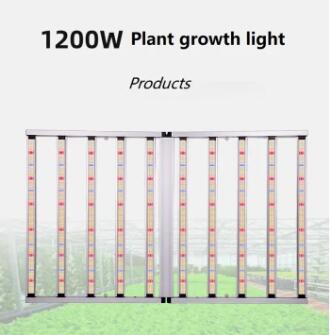Harnessing Light: Understanding Spectrum Guidelines for Optimal Plant Growth at Every Stage
2024-03-16
In the captivating realm of indoor gardening and hydroponics, the role of light is paramount in nurturing healthy and thriving plants. Different stages of a plant's life cycle demand varying light spectrums to support optimal growth, from germination and vegetative growth to flowering and fruiting. Understanding these specific light spectrum guidelines is essential for indoor gardeners to maximize productivity and yield. Let's explore the importance of light spectrum at each growth stage and the guidelines to follow for successful plant cultivation.
Germination Stage:
1. Importance of Light:
During germination, seeds require specific wavelengths of light to trigger the process of sprouting and initiate growth.
2. Recommended Spectrum:
Blue light, with wavelengths ranging from 400 to 500 nanometers (nm), is crucial for stimulating germination and promoting healthy seedling development. LED grow lights with a high proportion of blue light are ideal for this stage.
Vegetative Growth Stage:
1. Importance of Light:
During the vegetative growth phase, plants focus on developing strong stems, lush foliage, and robust root systems to support future growth and flowering.
2. Recommended Spectrum:
A balanced spectrum consisting of blue and red light is optimal for vegetative growth. Blue light continues to promote sturdy growth and foliage development, while red light (wavelengths around 600 to 700 nm) encourages branching and leaf expansion. LED grow lights with a combination of blue and red diodes are commonly used during this stage.
Flowering and Fruiting Stage:
1. Importance of Light:
As plants transition to the flowering and fruiting stage, they require specific light conditions to stimulate flower formation, pollination, and fruit development.
2. Recommended Spectrum:
Red and far-red light become increasingly important during the flowering stage. Red light promotes flowering and fruiting, while far-red light (wavelengths around 700 to 750 nm) plays a role in regulating flowering time and enhancing flower production. LED grow lights with a higher proportion of red and far-red diodes are ideal for this stage, with some growers also incorporating UV and IR wavelengths to maximize flower yield and quality.
Supplemental Lighting:
1. Supplemental Spectrum Adjustments:
In addition to the primary growth stages, supplemental light spectrums such as ultraviolet (UV) and infrared (IR) can be strategically used to enhance specific plant traits, improve nutrient uptake, and boost overall plant health.
2. Dusk and Dawn Simulation:
Mimicking natural sunrise and sunset transitions with gradual changes in light spectrum and intensity can help regulate plant growth cycles, promote hormonal balance, and improve flowering and fruiting outcomes.
Conclusion:
In conclusion, understanding the importance of light spectrum at different growth stages is essential for indoor gardeners and hydroponic enthusiasts seeking to cultivate healthy, vigorous plants with optimal yields. By adhering to specific light spectrum guidelines tailored to each growth phase—whether it's germination, vegetative growth, or flowering—gardeners can harness the power of light to nurture thriving plants from seed to harvest. With advancements in LED grow light technology, growers have unprecedented control over light spectrum customization, allowing for precise adjustments to meet the unique needs of each plant variety and growth stage. Embracing these guidelines and incorporating them into cultivation practices can lead to bountiful harvests and a rewarding indoor gardening experience.



